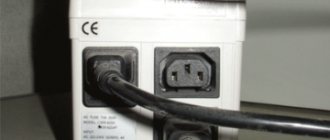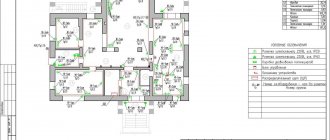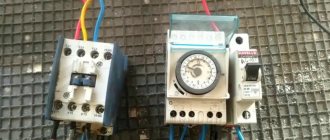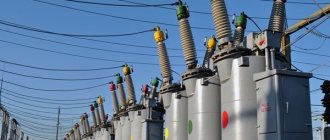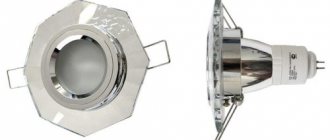Connection methods
The equipment automatically transfers the digital file over an Ethernet network. The process can be carried out over a local network or directly via the Internet. To do this, you can use a personal computer or laptop. In other words, any computer can connect to the camera using a special IP address.
Even at the stage of choosing a method for connecting the video camera, you need to acquire all the auxiliary devices, materials and read the attached instructions in detail. IP type devices can operate using a router, transmitting a signal via WiFi.
Video cameras can transmit signals in different ways:
- via a special cable;
- wirelessly.
Today, wired connections are considered obsolete. It is mainly installed in small areas.
The decline in popularity is due to the need to include multi-meter auxiliary wires in the installation. However, the price of such devices is much lower.
Connecting wired video cameras to a computer can be done using one of the following systems:
- video capture card;
- TV tuner;
- USB converter;
- video recorder.
Compared to others, a USB converter is cheaper. It is easier to install and integrate with any computer. Externally, the device resembles an ordinary flash card, which has special inputs for connecting cameras. But the quality of the transmitted image leaves much to be desired.
The image capture card should be mounted directly into the computer system unit using a PCI Express connector. It will serve as a good solution for a private small network, namely up to 16 video cameras.
Methods for connecting cameras to a computer
Connecting a surveillance camera to a computer is not a very complicated process, but it does require certain skills and qualifications. Therefore, to properly configure video surveillance and ensure trouble-free operation, it is better to seek the help of specialists.
Contact our company if you are not confident in your abilities. Our specialists will help you solve all problems. But if you are confident, then we will tell you how to connect a video surveillance camera to a computer with your own hands.
Depending on the type of cameras, there are several ways to connect them. Each method has its own advantages and disadvantages.
Analog cameras
Analog cameras (including AHD/TVI/CVI) are most widespread. They are very versatile - there is a huge selection of models with a wide variety of characteristics: dome, outdoor, vandal-proof, etc.
Unfortunately, an analog camera cannot be directly connected to a computer. To do this, you need to use some kind of intermediate device: either a video capture card, or a video recorder, or a special video server-transcoder.
Moreover, the board can only be installed in the system unit - there is simply no room for it in the laptop. Therefore, if you want to connect the camera specifically to a laptop, then you should choose either an IP camera or a USB (regular webcam).
PCI-e video capture card
A video capture card is a device (board) that is installed in a PCI or PCI-e slot on a PC. Most often, video capture cards produced for analog video surveillance systems have 4-16 video inputs.
As a rule, the board comes with software that makes it possible to use various options: remote access via the Internet, start of recording using a motion sensor or according to a schedule, cyclic recording of a video archive, etc.
A video recorder (DVR) can act as an intermediate device between an analog camera and a computer. But this method cannot be called “correct”, because... in this case, everything is connected to the recorder: both the camera and the computer. The system unit is connected to the recorder via Ethernet using software. The advantages of this option are:
- Data can be stored on the recorder and the PC can be turned off when not needed.
- You can connect several cameras to the recorder.
- The PC may be very far from the recorder.
Of the minuses, only one can be noted: the recorder is a relatively expensive device, especially if a hard drive is installed in it.
Another way to connect cameras involves using a video server that converts the analog signal format to digital.
Video server for 4 channels
The device has a BNC input and a LAN output, from which the signal enters the computer network. Thus, with the help of a video server, an analog camera works on the principle of an IP video camera.
To solve this problem, you can also use USB converters. The device operates on the same principle as a video server, i.e. The input receives an analog signal, which is converted to digital. The main difference is that the digital signal is supplied to the PC via a USB connector. This option is preferable for connecting a video camera to a laptop.
USB DVR converter
Connecting IP cameras
IP video cameras have a standard network connector and are connected to a computer via an Ethernet network. A wireless method is possible - the camera connects to the WiFi router using a cable, but the computer connects to the router via WiFi.
Setting up a video surveillance camera when connecting to a computer or laptop with a network card occurs through a connecting cable that is used when organizing local networks - “twisted pair” with RG-45 connectors.
The camera can be connected to a computer directly, or using a router or switch.
After the cable is connected, you need to configure the IP camera in accordance with the IP camera documentation. After this, you can type the IP address in the address bar of any browser and access the camera at any time using your login and password. Special options allow you to control the video camera via a computer, view and save information.
If you plan to use not one, but several video cameras, then the video surveillance cameras are connected to the computer through a network switch with several ports.
To make it easier to work with an IP camera, you need to install an IP camera management program on your computer. The choice of such programs is very wide: there are both completely free programs and paid ones.
Wireless WiFi CCTV Cameras
Using WiFi cameras does not require laying connecting cables. All you need to do is install the special software for the video camera on your computer, and then establish a WiFi connection. The computer you use must, in turn, be compatible with wireless networks.
Wireless WiFi camera
WiFi cameras are the same as IP cameras, but with a wireless interface. They are configured exactly like regular wired IP cameras.
Benefits of using WiFi cameras:
- No cabling required. It is enough to have a 220V socket near the camera installation site.
- Easy and quick installation. WiFi cameras are ready to install out of the box.
- These cameras have extensive configuration and control options.
WiFI cameras also have disadvantages:
- The signal is greatly weakened by walls and other obstacles. This is the main drawback. When installing cameras of this type, it is necessary to research in advance the issue of reliable reception of the WiFi signal from the router to the farthest installation points.
- There is a playback delay.
USB cameras
Perhaps the simplest is to connect a webcam to your computer. This is either a standard webcam built into the laptop, or a regular inexpensive USB camera. Such cameras, as a rule, do not require any additional configuration. Software is also supplied to work with them. But also many video surveillance programs “understand” these cameras.
Computer USB camera
USB cameras are suitable for quickly creating a simple video surveillance system. When the need to record arises spontaneously. In this case, they are irreplaceable.
However, the webcam cannot be installed far from the computer. The distance is limited by the length of the USB cable. Exhibitions, presentations, meetings - these are the most common uses of such cameras.
DIY connection
Before you begin installation, you need to take care of purchasing a complete set of equipment. Today this is very easy to do, since manufacturers supply stores with a wide variety of models of street tracking devices. They differ from each other in cost, installation technology and technical capabilities.
Necessary tools and equipment:
- connecting wires;
- electricity supply unit;
- coaxial cable (for analog devices);
- software.
It is possible to fill the register with electricity thanks to the connecting cable.
Thus, the entire mechanism will be supplied by one source. For these tasks, it is best to use a wire that has an electrical cable. The cable is connected to the device using special connectors or wires.
Detailed connection instructions
In the overall chain, the computer monitor acts as a video receiver. The resulting color images may vary depending on the device model.
The process of setting up the camera to a PC must be carried out using an RCA connecting wire. The video output from the equipment must be connected to the video output of the PC. However, the audio output must be disabled.
Among the main advantages of the system, masters highlight the possibility of programming. The next step is to connect the video output to the central part of the coaxial connecting wire. The black and red cables are connected as follows: RCA is connected to the opposite end. Increasingly, modern manufacturers include devices with BNC connectors.
The process of connecting the device to a PC can be done only in three ways in the following sequence:
- Installation of the image capture board.
- The total number of outputs in the chip corresponds to 16, so this value facilitates the installation of a single set of video cameras. Experts recommend purchasing specialized software along with the board.
- You can only connect a video device to a PC using a USB converter. This approach is considered more rational, since it allows you to convert the analog signal of the device into a digital one.
- Connecting the device to the PC must be done using a video server. First of all, this is necessary to improve image quality.
How to connect video surveillance to a laptop?
Figuring out how to connect video surveillance to a laptop or personal computer is not so difficult; it is enough to have basic knowledge of electronics and computer technology. But doing it yourself can lead to mistakes, and therefore it is better to entrust this matter to professionals.
Connecting a CCTV camera to a computer via VGA comes with many benefits. In this way, you can create an archive of video recordings on your hard drive or removable media and carry out programming. Computer-based control is low cost, quite reliable and effective.
What do you need for this?
In order for the signal to be viewed and transmitted to the Internet, the data must be digitized. Depending on the type of equipment, it can be performed in the following ways:
- Install a video capture card on the laptop. It will help to read the signal, encode and archive all information. Typically the board is used for analog systems. It has from 4 to 16 slots, which will allow you to create a fairly large video monitoring system. The main disadvantage of the method is the inability to connect.
- Use a logger. This technologically advanced device can be used on digital and analogue. The recorder processes and combines information, after which it is sent to any device.
- Install programs. At the moment, there are many programs that allow you to manage complexes. With their help, you can configure it to detect movement, work at a certain time interval, etc.
Analog cameras
The simplest and most affordable way to ensure facility security is to connect analog cameras. These are simple video cameras that have a tulip-shaped connector for connecting to a monitor. The red connector is needed to provide power, yellow for video broadcasting, white for audio. Also, signal transmission can be carried out via twisted pair or BNC connector, depending on the model. Among the disadvantages of such a system are the limited distance between devices by cable length and the high cost of laying cords.
PC setup
In order for the equipment to work correctly, it must be configured and the appropriate software installed. Often the manufacturer includes software in the kit. In addition to them, there are many similar solutions, the functionality of which may be no less attractive.
Wired devices operating using a DVR, as well as wireless cameras operating using a router, are configured as follows:
- DVR client program is being prepared;
- enter the password and user name;
- the “Settings” option opens and the “Add zone” value is selected in the text entry field;
- then, in the proposed values, select the “Find device” option - after that the program independently finds the recorder connected to the computer and displays the devices that are connected to it;
- to view images, select devices and press the “Add” button;
- The recording format is set in the Settings menu.
SOFTWARE FOR USB CAMERAS
To implement video surveillance based on USB video cameras, you must install the appropriate software on your PC.
Most digital USB cameras and converters are sold with a disc containing drivers and software. Also, a minimum set of utilities can be downloaded from the manufacturer’s website.
Software for the converter is usually included in the package. Thus, the popular EasyCAP002 DVR converter model is designed to work with the Super Viewer program.
The software allows you to quickly switch between connected cameras, set up timed recording, take screenshots and save video files to the hard drive of your computer or laptop.
Most of these programs have a simple and intuitive interface, so setting up and operating the equipment does not cause difficulties for inexperienced users.
For video surveillance using digital USB cameras, as a rule, third-party software is used, which significantly expands the functionality of even the simplest models. There are both paid and free versions of the programs.
Paid software usually has a greater range of features.
What programs are needed
The most popular are IP cameras that operate over a local network via a router. The software is selected taking into account the type of camera that is installed on the system.
Most manufacturers include specialized software that performs many useful functions:
- broadcast video from devices directly to the network;
- activate the recording mode when the motion sensor is turned on;
- record videos at set time intervals and much more.
In addition to software, experts recommend using auxiliary elements and additional devices for a kit that includes more than 10 cameras, namely:
- uninterruptible power supplies;
- anti-lightning protection;
- a storage device for storing information.
How to connect IP cameras directly to PC
With this hardware configuration, you need a fairly powerful PC with an appropriate video card. In addition, specialized software is required. Typically, utilities that come with cameras are used. But the developers have already released quite a few programs whose functionality is much wider. Such video surveillance management programs include:
- XProject Go – supports up to 8 digital cameras for free, one video archive for up to 5 days. Record video in AVI format. The program is quite unpretentious; to maintain its functionality, it only needs 2.4 GHz and 2 GB of RAM, and it works on almost all modern Windows platforms.
- Ben Software Security Spy is designed for Mac OS users. The main features include an integrated software motion detector with automatic email notification, its own browser and the ability to automatically send information to an FTP server.
- Zone Minder – developed for Linux OS. There are no restrictions on the size and retrospective of the video archive and the number of cameras. Supports IP and USB cameras. Sends alarming SMS and email messages.
- Smart IP – development of domestic programmers. The free version of the program has restrictions on the number of cameras up to 16 and the video archive size up to 1 GB.
HD-TVI video camera Hikvision DS-2CE16C2T-IR
For an example setup, let's take the Hikvision DS-2CD2032-I IP video camera. The sequence of actions for connecting the camera to a PC will be as follows:
- The camera is connected via a LAN output to the switch, where the computer is connected (you can directly to the PC’s network card).
- In any browser window, enter the default IP address. For the manufacturer Hikvision it is 0.0.64, login admin, password 12345.
For other manufacturers, IP addresses, logins and passwords are listed in the table:
Cloud service for IP cameras
As a rule, the message “Page unavailable” will appear in the browser window. This happened because the IP address range of the camera and PC are different.
- You need to change the video camera address. To do this, in Windows OS, go to the “Network and Sharing Center” → “Local Area Connection” → “Information” tab. In the “Network Connection Information” window that appears, we are interested in the addresses of the DHCP and DNC servers, as well as the “Default Gateway”. For example, 192.168.0.1. you need to replace the camera's IP address with a comparable one. From 0.0.64 to 192.168.0.64. You can make the replacement using a special utility from the manufacturer for Hikvision cameras - this is the SADP program, which is located at https://overseas.hikvision.com/en/tools_82.html.
She herself will find the equipment connected to the PC. All that remains is to enter the login and password indicated in the table and change the address.
Step-by-step setup guide
Devices from various manufacturers offer a wide variety of operating options, but a basic set of settings is preserved in all video cameras:
- Entering the camera's IP address;
- Port input;
- Enter authentication information.
All initial data is indicated on the device box. However, experts recommend changing them to new values, since the old ones cannot guarantee safety.
After all devices are connected into a single network, you should begin setting up the remaining functions included in the software package.
Setting up via computer
In order to connect cameras to a PC and perform their subsequent configuration, you need to install specialized software. As a rule, it comes complete with equipment. However, the Internet is full of alternative programs that can be just as useful.
Let's consider two configuration options:
- Wired cameras via DVR
- Wireless cameras via router
To configure cameras connected via a DVR on your computer, you need a DVR client program:
- Enter username and password
- The “Settings” tab opens and in the context menu (called with the right mouse button) select “Add zone”
- Also, in the context menu, select the “Find device” item - the program will independently find the DVR connected to the PC and display the cameras connected to it
- By selecting cameras and clicking on the “Add” button, you can view images from them
- By going again to the “Settings” tab, you can set recording modes, etc.
Wireless or IP video surveillance cameras, the connection of which is reminiscent of setting up a local network, have become widely popular. Special video surveillance software must be installed for the computer through which the router operates.
Watch a video review of setting up and setting up equipment;
A huge variety of programs offer a variety of options during operation, but the initial setup in any of them comes down to the following:
- Entering the device's IP address
- Port input
- Entering Authentication Data
All of the above information must be indicated on the camera box. However, it is unsafe to leave them in this form and it is recommended to replace them with your own. When all devices are united into one common network, you can begin setting up any other parameters offered in the program menu.
Examination
You can check the correctness of the settings using external resources such as portscan.ru. If the ports are not closed and forwarded in the router’s virtual WEB server, then the software will issue a successful connection.
ActiveX is also allowed on the remote PC. To do this, the IP address of the router is indicated in the address bar of the browser, but port 81 is added. If during setup the recorder has problems with the Internet connection, you can bind the DNS address of the router to the camera. Due to the fact that providers may block some ports from time to time, the technician needs to accurately test the system.
Cost of specialist work
The entire list of work can be easily completed without professional help, but in order to reduce the risk of malfunctions during operation, it is advisable to entrust the installation to a professional technician. The final cost of the work is calculated based on various factors. Sometimes this type of service is provided free of charge by the companies from which the equipment was purchased.
On average, market prices for connection and setup vary within the following limits:
- wireless devices – from 1.5 thousand rubles;
- installation of a DVR – from 2.5 thousand rubles;
- internal wired devices – from 1.5 thousand rubles;
- external cameras – 2.5 thousand rubles.
You should know that tariffs for installation of video cameras in winter increase to 20%. Also, the cost may increase during urgent work. If the craftsmen have to perform a large amount of work, the customer can count on a certain discount.
